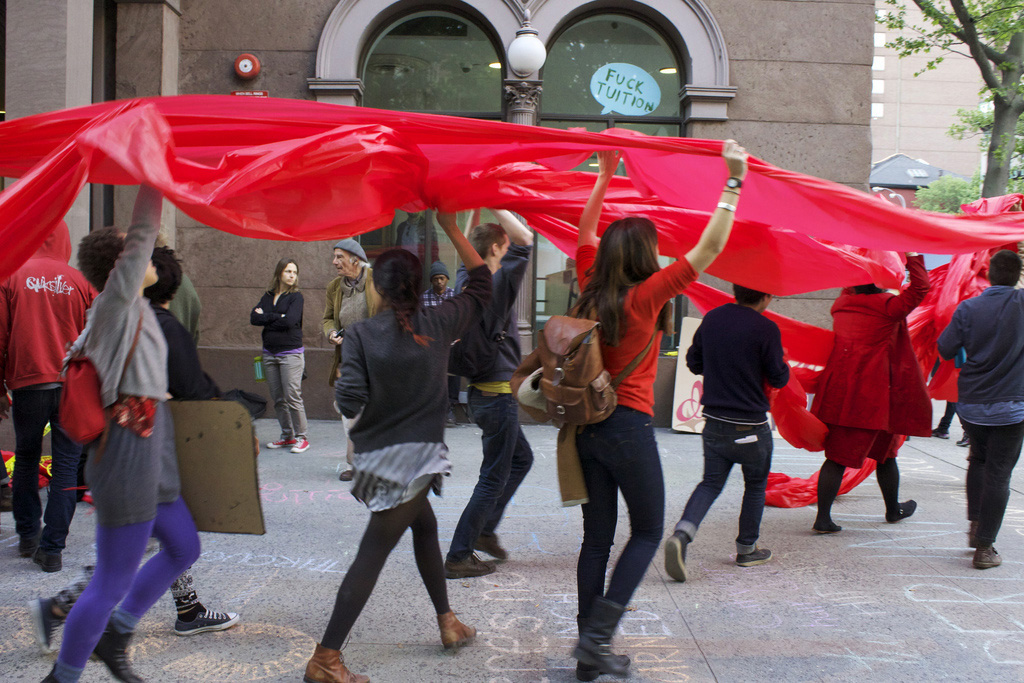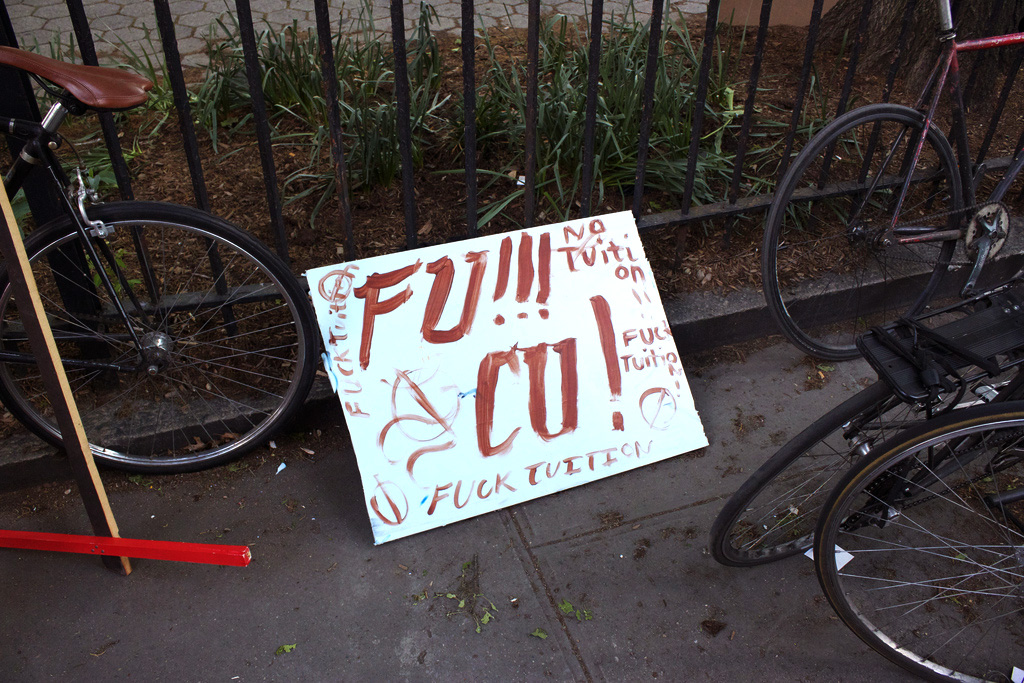In response to Tuesday’s revelation in the New York Times that The Cooper Union for the Advancement of Science and Art will charge tuition for the first time, hundreds of students took to the streets on Wednesday to protest Cooper Union President Jamshed Bharucha’s decision.

The change will only affect students in the graduate program – undergrads will still able to attend Cooper Union without charge – but that did not prevent a mass outpouring of anger and disappointment at the school’s East Village campus.
“Yesterday, the administration announced to the New York Times – basically at the same time, if not before telling the students – that they are going to increase the graduate programs and charge tuition for them,” said Casey Gollan, a student at Cooper Union. “We’re all pissed about hearing about this yesterday, not from the administration, but from the papers”
Student protests in New York were already planned with Wednesday’s T-Day March – a demonstration against student debt, which on April 25 was expected to exceed $1 trillion nationally for the first time. But Bharucha’s announcement only increased the fervor with which many took to the streets. Cooper Union students began the day with a walk-out at 8 AM, and occupied Cooper Square until 4 PM, when some left to join the T-Day march from Union Square.
Many Cooper Union students brought furniture and banners into Cooper Square for the protest. At around 12:30 PM, they began throwing the banners from the classroom windows, carrying them into the park, and using them to wrap the statue of Peter Cooper — the institution’s founder — that stands at the corner of East 7th St. and Cooper Square. Afterwards, they staged a puppet show that mocked members of the administration.
Jessie Kreuzer, a recent Cooper Union alumnus, climbed the statue in solidarity with the protest. He stood there for over an hour until NYPD officers took him into custody. Officers also arrested student Sara Abruna, 23. The incident was caught on camera and posted on YouTube.
The demonstrations came after months of tension over whether or not the 153 year-old institution, which has functioned as a tuition-free academy since its inception, would have to start charging students in order to cope with its financial problems. In October, 2011, Bharucha told the New York Times of the possible implementation of tuition for the school’s undergraduate program.
“Within the understanding of the student debt protests and how national debt is a trillion dollars, people seek places like the Cooper Union because of its mission,” said Olivia Ahn, a student at the School of Architecture. “It would be unfortunate to see it diluted, and only to recede into the other types of American education.”

Cooper students plan to continue their attempt to preserve the university’s mission, with a community summit organized by the Friends of the Cooper Union planned for Thursday, April 26. Students, alumni, and faculty are expected to discuss alternatives to tuition implementation.
“I think we’re seeking passion from everyone to solving this,” said Ahn. “It would be nice to have those in the administration and the president declare their position on free tuition publicly to the student, faculty and alumni body.” According to Ahn, this would be the only way they could work openly and fully towards inventive and united solutions.







Do you have a spam problem on this site; I also am a blogger, and I was curious
about your situation; many of us have developed some nice methods and we are looking to
exchange methods with others, please shoot me an e-mail if
interested.
Thanks for finally writing about >Cooper Union Students Protest Tuition Announcement | The New School Free Press <Liked it!
Thanks for your personal marvelous posting! I definitely enjoyed
reading it, you’re a great author.I will make certain to bookmark your blog and definitely will come back later on. I want to encourage you to ultimately continue your great
work, have a nice afternoon!
Appreciate the recommendation. Will try it out.
This paragraph is truly a fastidious one it assists new web
visitors, who are wishing in favor of blogging.
The Community Summit on April 26 was the second one; the first was held on December 5. The December 5 summit got a lot of news coverage, and kicked off a five month stakeholder process resulting in the publication of a 30-page consensus document, The Way Forward. Meanwhile, the president had set up his own task forces with their schedules.
For some reason known only to the president and perhaps some others in his inner circle, the president demanded an interim report from his task forces in March, secretly got approval of some of their recommendations in April, and announced two days prior to the second Community Summit. The intention had been to present The Way Forward to the press and the president and to the task forces for consideration before their issuing their final report, and then for the final report to be open for public comment and feedback. The Way Forward has been presented to the president and to the task forces, but the press hasn’t done their homework on the processes which were clearly presented in a first page timeline in The Way Forward.
The story of how the president pre-empted both community stakeholder processes did not go out on AP and has become lost. Please read The Way Forward.
Barry Drogin EE ’83
Publisher, The Alumni Pioneer
Jesse was on top of the statue way longer then an hour. Possibly 4—5 hours?